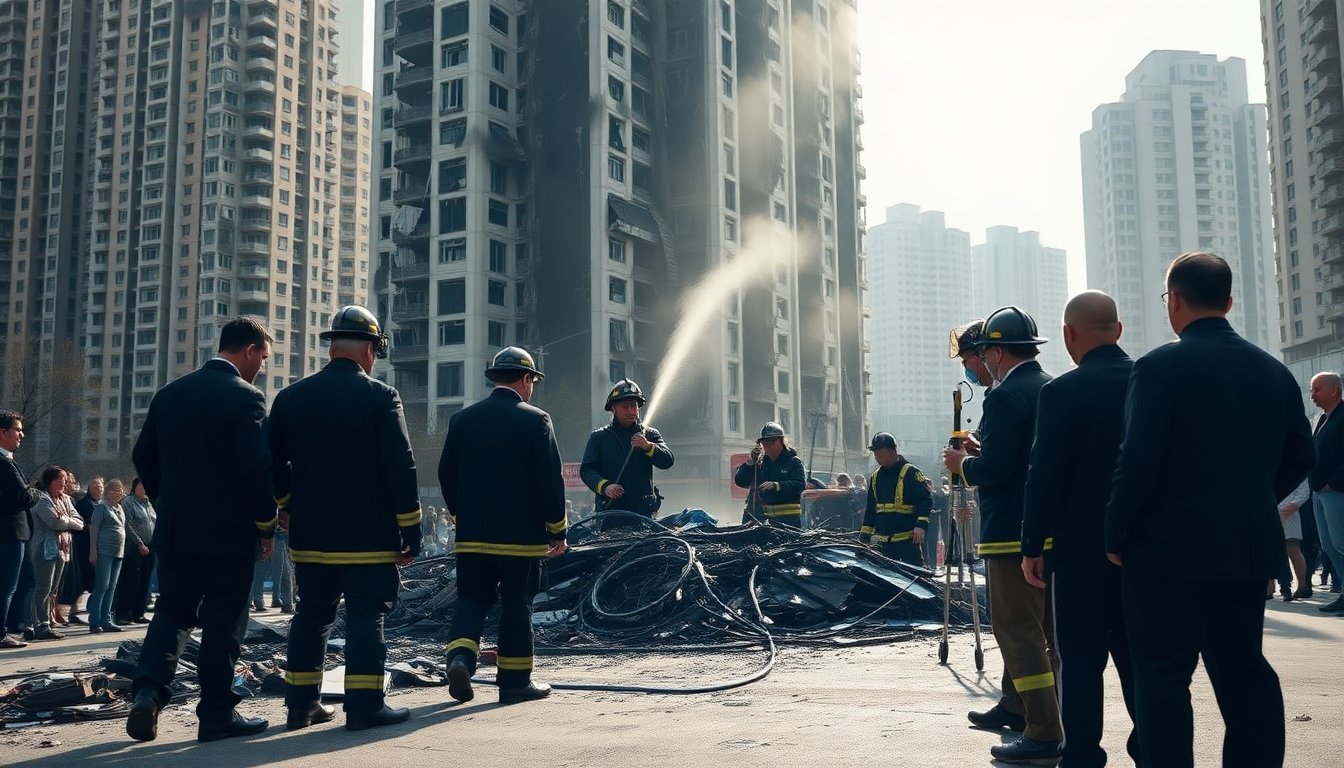Table of Contents
In a devastating incident at the Wang Fuk Court residential complex in Hong Kong, a large fire has resulted in significant loss of life and left many individuals unaccounted for. Following a chaotic night, authorities confirmed 44 fatalities, while 279 residents remain missing. This tragedy not only brings grief to affected families but also raises urgent questions regarding fire safety protocols and construction practices in one of the world’s most densely populated cities.
As firefighters fought the intense blaze, initial investigations revealed potential negligence that may have worsened the situation. All eight buildings were undergoing renovations, and the use of bamboo scaffolding and other materials has come under scrutiny in the wake of this disaster.
Understanding the fire’s rapid escalation
The fire broke out late at night, quickly spreading throughout the complex due to various factors, including the presence of flammable construction materials. Reports indicate that materials such as styrofoam significantly contributed to the fire’s rapid spread. Senior Superintendent Eileen Chung Lai-yee stated that these materials were installed by a construction engineering firm, prompting questions about compliance with safety regulations.
Negligence and accountability
Authorities have arrested three individuals associated with the construction company under investigation for its role in the incident. The arrested individuals, including two directors and an engineering consultant, are suspected of gross negligence that allowed the fire to spread uncontrollably. The investigation continues, with officials committed to holding those responsible accountable for their actions.
Emergency response and challenges faced
As the fire engulfed Wang Fuk Court, emergency response teams deployed over 200 fire vehicles and dispatched more than 1,200 firefighters and ambulance personnel to the scene. Despite their efforts, intense heat and smoke hindered their ability to rescue residents trapped on the upper floors of the complex. John Lee, an official, outlined the main priorities for responders: extinguishing the flames, rescuing trapped individuals, and providing aid to the injured.
Residents, such as Jason Kong, watched in despair as the flames consumed their homes. Kong expressed deep concern for his dog, Ber Ber, who was left behind in the chaos. The distress of residents unable to account for their loved ones sharply contrasted with the tireless efforts of firefighters working throughout the night.
A community in distress
The aftermath of the fire has left many residents displaced and in distress. Temporary shelters have been established in nearby community centers for those forced to evacuate. The Hong Kong Fire Services Department has advised individuals living nearby to remain indoors, close windows, and avoid the area until conditions improve.
This tragic event serves as a stark reminder of the inherent risks associated with high-rise living in urban environments. High-density structures wrapped in combustible materials present unique challenges that must be addressed to prevent future disasters. As the community copes with this tragedy, the demand for a thorough investigation and regulatory reforms intensifies.
Looking ahead: A call for change
The fire at Wang Fuk Court ranks among the deadliest incidents of its kind in recent years, sparking serious discussions among lawmakers and community leaders about fire safety regulations. Concerns have arisen regarding the adequacy of oversight related to construction practices, scaffolding, and evacuation plans for high-rise buildings.
As Hong Kong faces the challenges of urban living, the need for comprehensive safety measures becomes increasingly urgent. The city must learn from this tragedy to ensure that the lives lost will not be in vain and that future safety protocols are strengthened to protect all residents.


